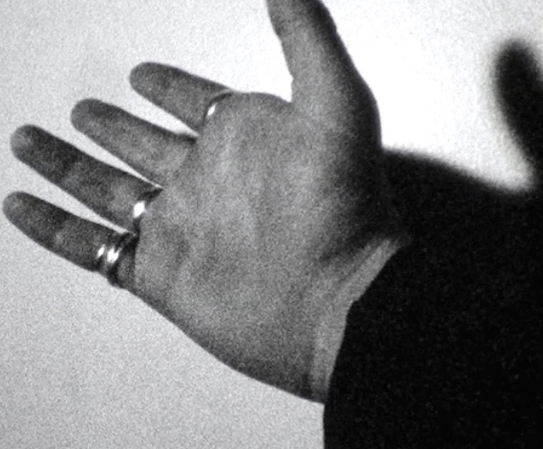Antony and the Johnsons, "Swanlights"
by Garland Grey

When you’re young, everything is one big joke. You hide behind layers of disaffection and eye-rolling to shield others from the things you care about. You define yourself by your obsessions, set yourself against the rest of the world with the artifacts of a burgeoning internal life; you ardently defend these things from other people. Caring is weakness and apathy is strength. And in growing up, the very least that is expected of you is that you recognize the courage of earnestness.
“Swanlights” is the fourth studio album from Antony & The Johnsons, the band lead by the British-born, American-raised singer Antony Hegarty. Hegarty’s work can be best understood by considering the life and art of the Australian-born performance artist Leigh Bowery. Bowery used his art to push himself past his own personal shame-by adorning his body in ways that were grotesque or bizarre, by opening himself up to ridicule and surviving the scrutiny of others, he sought to transcend humiliation. Along with the drag performer Divine and the Butoh dancer Kazuo Ohno, Bowery is one of the artists Hegarty most often mentions in interviews.
To call the first three albums by Antony & The Johnsons confessional is almost insulting, given the tawdry Tales of Romance tint the word has accrued. Hegarty sings about gender identity, dreams of transformation, the equation of pain with love and all the ways people have been gutted by life. Every single song comes out wet and heavy with a painful courage.
“Swanlights” is different. It represents the work of an artist who has shed so much pain and remorse that he is no longer held in the thrall of this emotional molting. It creates a fossa, a space, between word and emotion, and examines the things that exist there. The tension between unspoken intangibilities and the failure of language to bound them is the soul of the entire album. Everything Antony Hegarty has done now seems conventional by comparison. It isn’t simply enigmatic; it defies scrutiny.
The album begins with an ending, with the lyric “Every, everything. Everything is new,” and alternating variations of this line, with wordless vocalizing. And it ends with a beginning, with “Christina’s Farm,” which concludes with “everything is new, every sock and shoe, tenderly renewed, everything is new” bringing us back by a commodius vicus of recirculation* to the opening. He has mirrored the theme of the album, continual rebirth, in the structure. It vacillates between obscure lyrics that allude not simply to things, but to other allusions, and small, brief moments of clarity. Trying to consider any one moment of Swanlights is difficult; it seems to only exist while you are listening to it.
With an artist like Antony, the danger of your love turning sour is ever present. You brace yourself before listening to each new album, wondering, “Is this the end?” You can sense within the first listen if this is a bold, fresh shock of something new, a necessary precursor to something greater, or the start of some stagnation. The artists you love like this are ones who carry a creative fire, who kindle something new into the world. Eventually all visions falter or run themselves out, and the artists stand at a crossroads, casting about for another vision. More often than not, if they’ve found commercial success, they realize how little is expected of them, and they can stop moving toward an intangible opus and start creating memorabilia to supplement their earlier work. My greatest fear was that “Swanlights” would break no new ground or would be a simple extension of “The Crying Light,” the last album.
“Swanlights” is full of pieces of songs, elongated, shortened, presented without context. “Violetta” is a little snatch of melody that could have nestled at the front of a perfectly nice “Antony Hegarty” song. “Thank You for Your Love” is all chorus, all exultation, with the barest trace of lyric as garnish. The title track begins with the audio in reverse, flowing into Antony’s voice, subterranean under a wavering vibration. His voice breaks the surface, several versions of himself working in tandem, before sinking below again; it is like divining the workings of a great machinery by the shadows it throws upon a scrim. Throughout the album, Hegarty disassembles the different parts of his songwriting, taking apart everything he’s ever done. In “Fletta,” the Italian word for “slaughter,” he fades into the background behind an ever-radiant Björk; it is the best song they have ever done together.
“The Spirit Was Gone” is the song that most recalls his earlier work. It is a delicate story, in which the narrator mourns the death of a woman, singing “It’s hard to understand” and raising his voice in a wail. It is so unlike the rest of the album, so like the minute tragedies and elegies of “I Am A Bird Now” and his self-titled album. It is the final gasp of his earlier creative period, an acknowledgement that while he is still able to create portraits of trembling and pain, he has to move into the unknown to remain an explorer.
Garland Grey is a writer from Texas. He blogs for Tiger Beatdown and maintains DREAMZONES. Your world frightens and confuses him.
